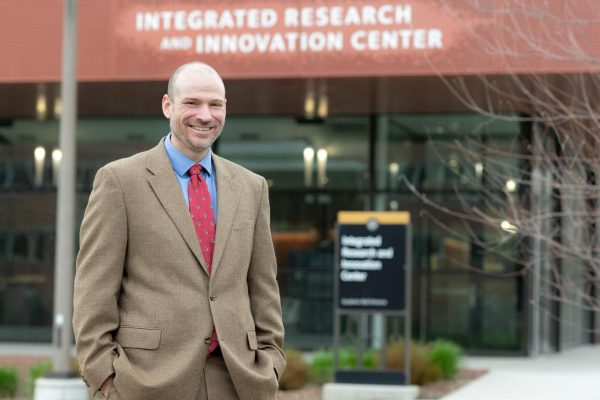Thank you to reporter Kyle Pfannenstiel for highlighting some of U of I’s COVID-19 modeling efforts, as originally published in the Post Register.

If you’ll be at the dinner table with people you don’t live with this week, research from the University of Idaho can help you gauge how likely you are to bump into someone who has COVID-19.
In Bonneville County, for instance, 1 in 16 people are likely actively transmitting coronavirus, according to estimates Monday morning. In Madison County, that’s about 1 in 10.
Exposure risk is incredibly high, according to health officials, hospital administrators and experts who are pleading with people to practice safety precautions such as masking and distancing if they choose to gather with extended family and friends during Thanksgiving. Last week, the Idaho Falls Fire Chief said the region’s largest EMS system was on “razor’s edge.”
“We’re trying to express things in ways that might relate to people a bit more,” project director Benjamin Ridenhour, a U of I mathematics professor, said of his team’s map.
Determining risk is hard. One way is through rates of spread in an area — calculated by averaging the number of new cases, each week, and dividing that by a region’s population. That’s how most national virus trackers do it.
Or, as Eastern and Southeastern Idaho Public Health districts do, you could determine how many cases are suspected to be active.
Both those measurements don’t include people who have COVID-19 but don’t get tested.
Ridenhour said that “silent” COVID-19 population — asymptomatic people, and people with such minor symptoms they don’t get tested — account for much of the virus’ spread.
“There’s a range of symptoms from being asymptomatic to being life threateningly sick,” Ridenhour said. The Centers for Disease Control says about 40% of all people with the virus don’t ever show symptoms. Ridenhour said “only a small portion of those cases are you going to pick up in surveillance.” That’s because although testing has expanded significantly, “it doesn’t change the fact that you have this huge group of people … who are not going to get tested.”
The U of I exposure risk map is based off a national modeling effortfrom Georgia Tech University researchers. That map lets users plug in the size and location of a gathering to show the odds that someone will have COVID-19 there.
At a gathering of 15 people in Bonneville County, there’s a 52% chance that someone will have COVID-19, according to Georgia Tech estimates on Monday.
These risk displays only say the odds of someone having the virus. They don’t predict the likelihood of spread, nor do they account for whether masks or distancing will be practiced at an event — all things that can significantly reduce the risk of spreading the virus.
Research from the U of I pandemic modeling team comes through a supplemental grant from the National Institutes of Health. Originally, the new modeling team had a five-year grant from NIH for around $11 million. But as the pandemic began, NIH gave the team around $500,000 more to model COVID-19 in rural communities.
“The first focus was on urban communities because that’s where the first outbreaks were,” said principal investigator Holly Wichman, a U of I biology professor who directs the university’s recently started modeling center. New York and Seattle were some of the nation’s first hotspots. “I think people in rural communities felt pretty safe. They felt like … they were naturally isolated; they were naturally distancing. But over time, as the virus spreads into these communities, they’re in some ways less prepared to deal with it.”
“It’s harder to get access to testing; it’s harder to get access to hospitals. Now what we’re seeing is a huge explosion in cases in rural communities,” Wichman said. “If you look at the maps, it’s changed over time. And we knew it was coming. That’s why we proposed this modeling effort.”
The exposure risk map isn’t the only tool the U of I team is working on. Others include a forecast of Idaho’s COVID-19 virus progression, along with a survey on behaviors in rural communities that can help test what resources can help curb virus spread.

